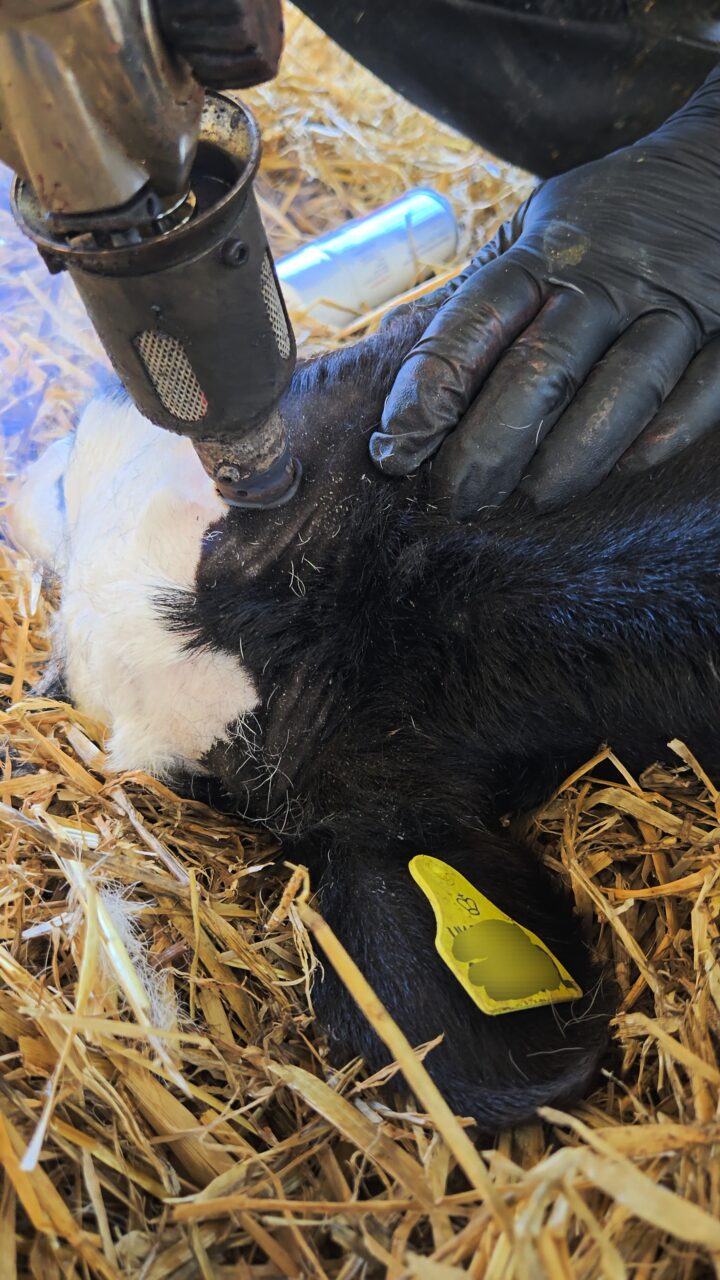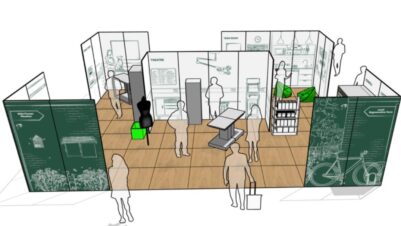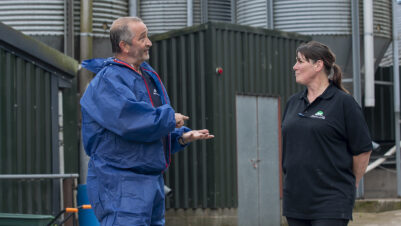
New research from the Royal Veterinary College (RVC) into the effectiveness of sedation and any associated health impacts when disbudding calves has revealed a correlation with lower growth rates after the procedure. This research will support veterinary practitioners to make informed decisions when disbudding calves and support animal welfare best practice.
Disbudding is the process of removing horn buds from calves to prevent horn growth, often to reduce risk to other animals and handlers throughout the animal’s life. It is common practice in the UK, with hundreds of thousands of calves undergoing the procedure each year. However, the process is painful, and healing can take up to nine weeks. The farming industry has recently seen a large increase in knockdown disbudding (disbudding under sedation with xylazine) to help handlers manage multiple procedures and perceptions that it may be more comfortable for the calf. To date, there has been little research into the effects this sedation has on calves’ development.
This research, led by Dr Sophie Mahendran, lecturer in farm animal health and welfare at the RVC and Tom Angel, farm resident at the RVC, alongside Synergy Farm Health Ltd and a large calf rearer, set out to understand the impact of sedation versus conscious disbudding on calves.
The researchers monitored the disbudding of 485 calves in Somerset between April and August 2024 and their welfare thereafter. There were two treatment groups, one which received local anaesthetic and non-steroidal anti-inflammatory drugs (NSAIDs) without sedation, and one group which received local anaesthetic, NSAIDs and xylazine sedation. The sedation quality was also recorded for the second group, namely, whether it was sternal recumbency (lighter sedation, lying on their chest) or lateral recumbency (deeper sedation, lying on their side).
The findings revealed that sedated calves grew 0.14 kg per day less in the 20 days post-disbudding compared to conscious calves. Within the sedated group, calves that entered sternal recumbency had the greatest reduction in growth at 0.89 kg per day compared to 0.98 kg per day for lateral recumbency. Additionally, almost 1 in 5 calves (19.3 percent) showed either movement or ended up in sternal recumbency, suggesting that this type of sedation was not always deep enough.
These findings of reduced growth and the impact of lighter and deeper sedation are not only an economic concern for farmers but may also indicate stress or welfare compromise for the animal. This research, therefore, provides vital insights for veterinary professionals and encourages them to carefully consider whether to use sedation for disbudding, particularly when sedation quality cannot be guaranteed. This also highlights the importance of investing in proper handling facilities instead of relying on sedation.
Dr Sophie Mahendran, lecturer in farm animal health and welfare at the RVC, said: “The use of sedation for disbudding calves is becoming a very common practice, so understanding the effects that xylazine use has is important. Knockdown disbudding is often used when calf handling facilities are poor, or to try and increase efficiency when disbudding large numbers of calves. However, this work has shown that it causes reduced calf growth rates for approximately 20 days following disbudding, and that this effect was worse in calves that only experienced a light plane of sedation and were able to enter sternal recumbency during the procedure. Therefore, vets should consider whether sedation should be used as a standard restraint method, or whether investment into appropriate calf handling facilities should be encouraged on farms.”
Further research would now be beneficial to monitor any longer-term impacts of disbudding with sedation on growth rates and calf health.






